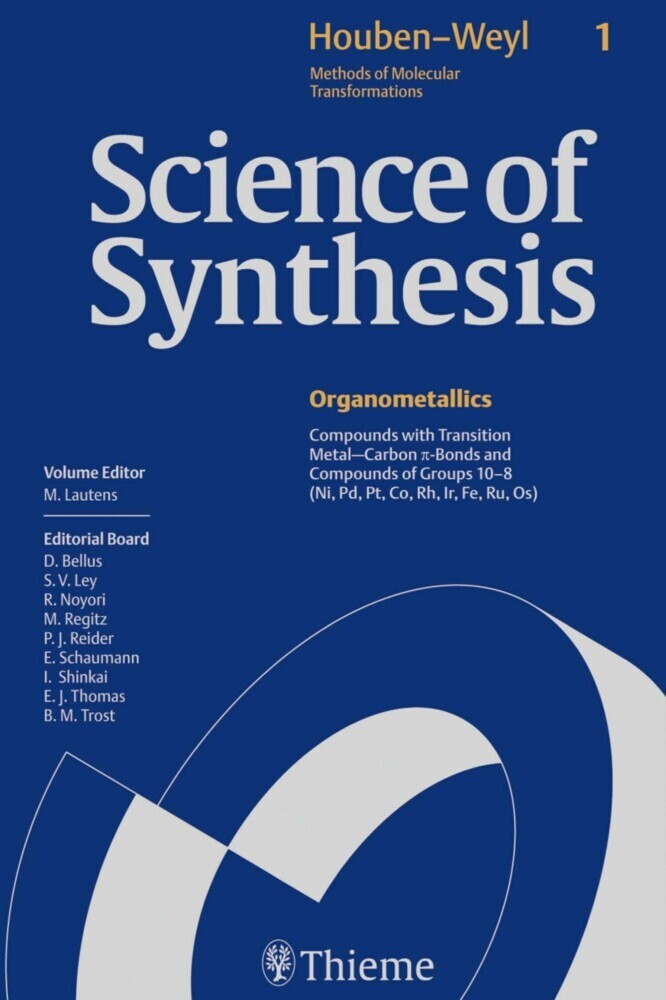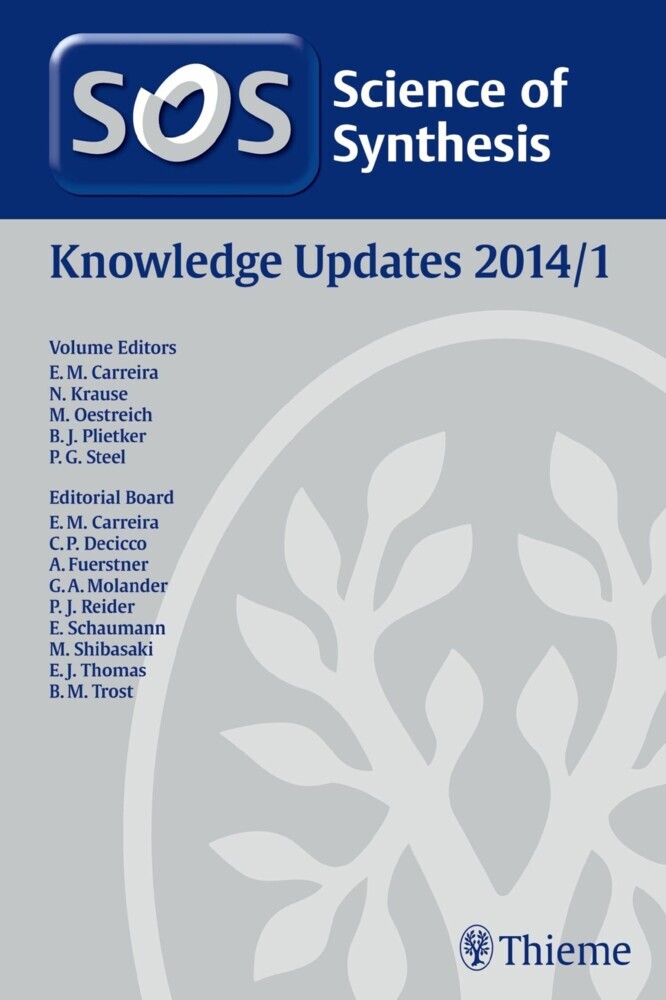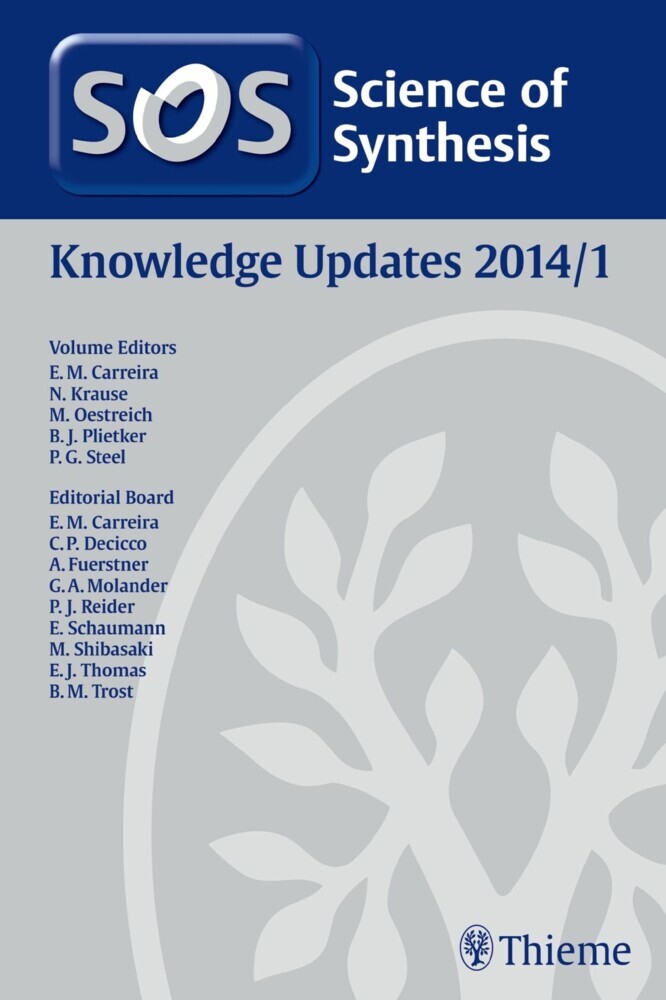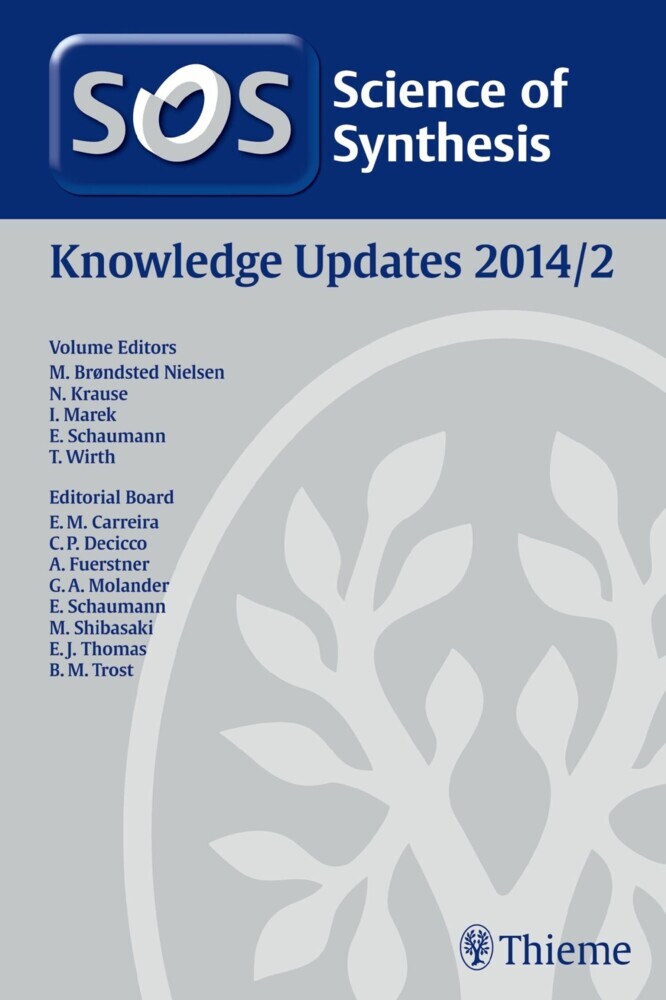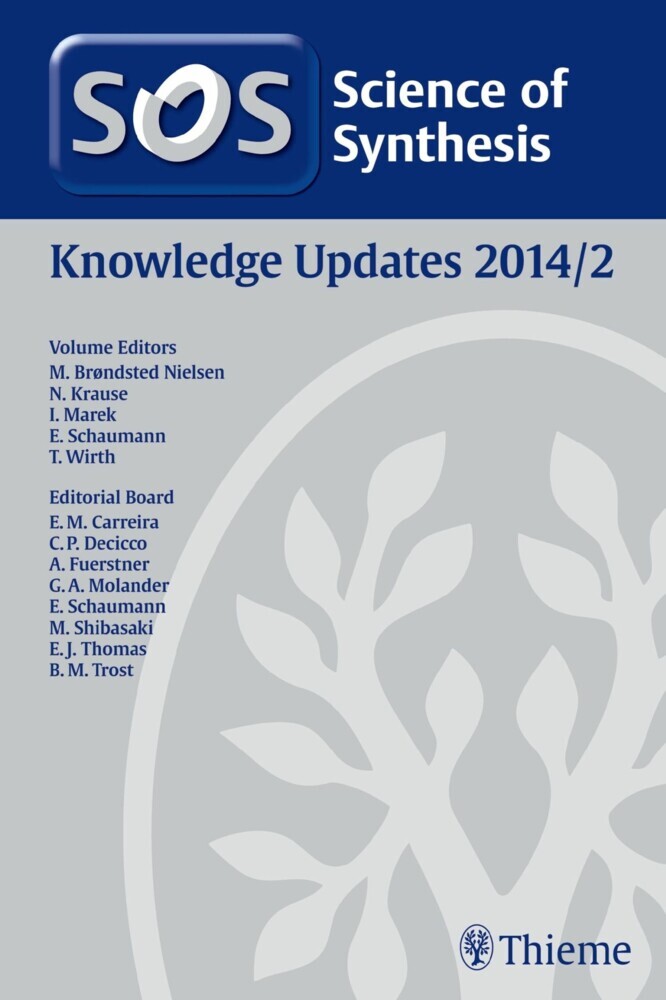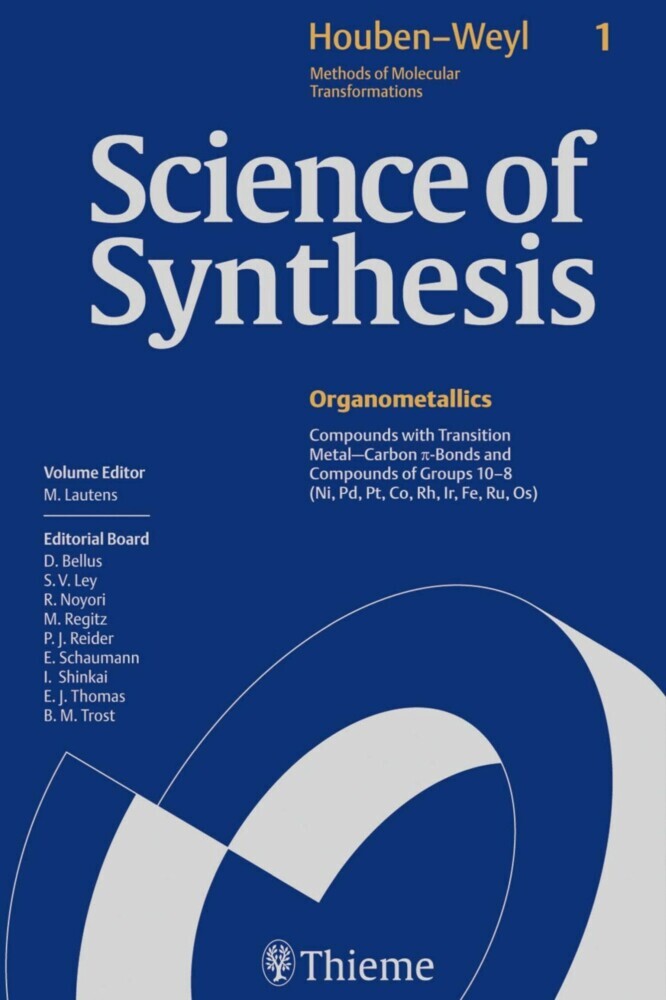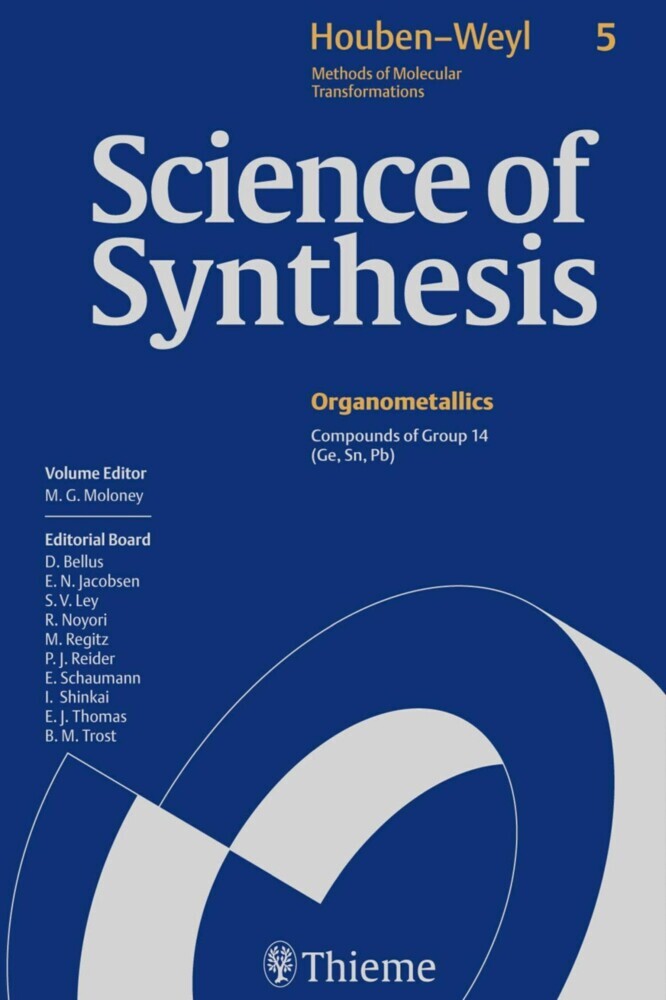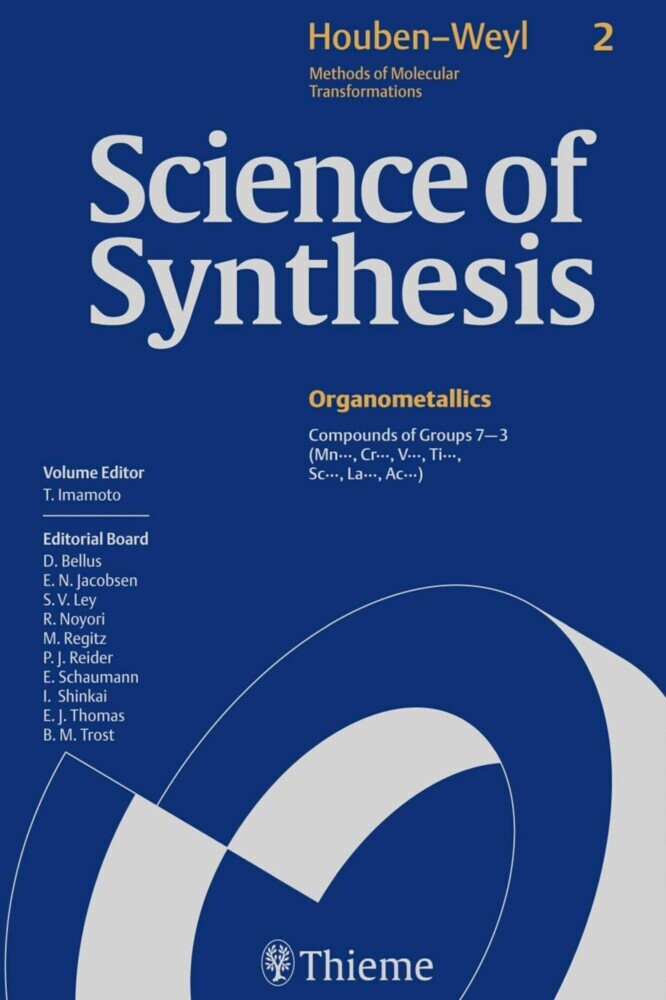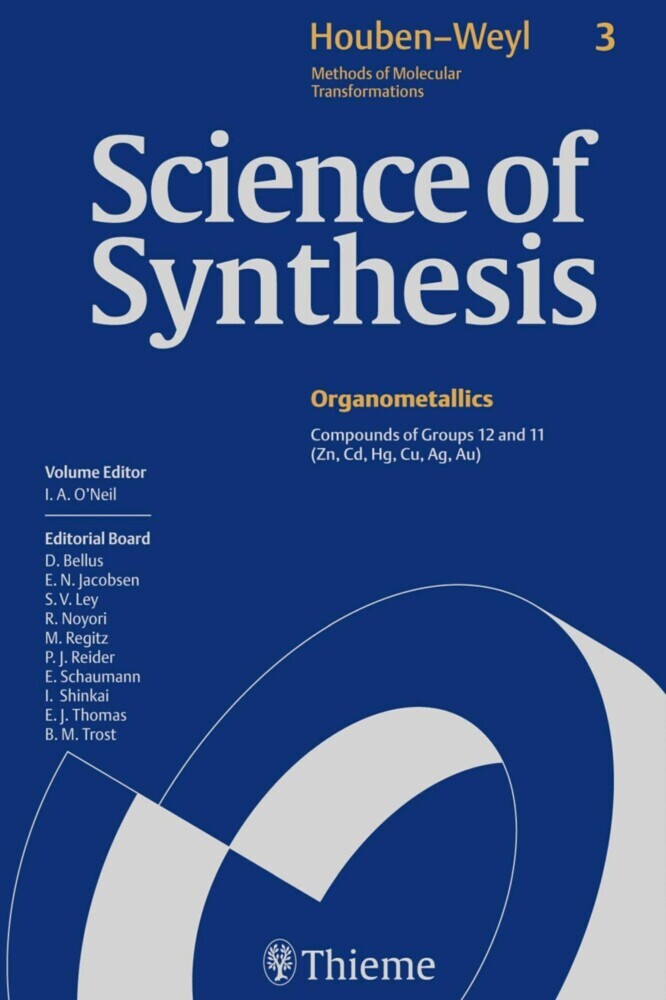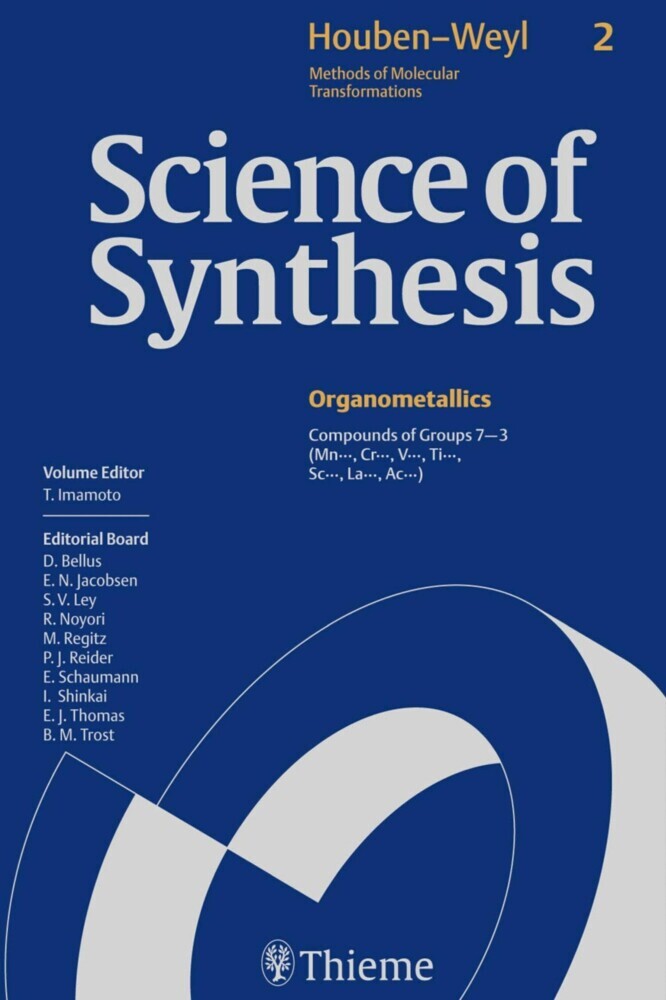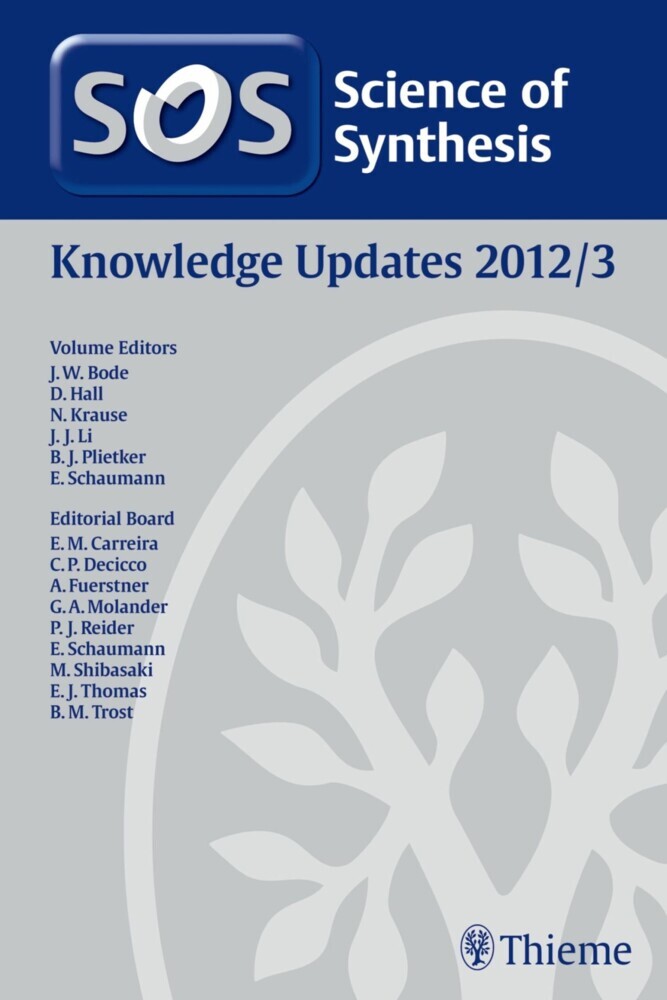Science of Synthesis: Houben-Weyl Methods of Molecular Transformations Vol. 1. Vol.1
Science of Synthesis: Houben-Weyl Methods of Molecular Transformations Vol. 1. Vol.1
Science of Synthesis: Houben-Weyl Methods of Molecular Transformations is the entirely new edition of the acclaimed reference series, Houben-Weyl, the standard synthetic chemistry resource since 1909. This new edition is published in English and will comprise of 48 volumes published between the years 2000 and 2008.
Science of Synthesis is a quality reference work developed by a highly esteemed editorial board to provide a comprehensive and critical selection of reliable organic and organometallic synthetic methods. Science of Synthesis is designed to be the first point of reference when searching for a synthesis strategy.
This volume covers compounds with transition metal?carbon pi-bonds for groups 10-8. It is the first volume in Category 1 (Organometallics) and the first volume of the Science of Synthesis series. The elements covered are Ni, Pd, Pt, Co, Rh, Ir, Fe, Ru, and Os and the range of organic pi-bonds includes arene, pentadienyl, cyclopentadienyl, diene, allyl, alkyne, and alkene moieties.
For full information on the Science of Synthesis series, visit the Science of Synthesis Homepage.
1;Science of Synthesis - Volume 1: Compounds with Transition Metal--Carbon p-Bonds and Compounds of Groups 10--8 (Ni, Pd, Pt, Co, Rh, Ir, Fe, Ru, Os);1 1.1;Title page;3 1.2;Imprint;5 1.3;Preface;6 1.4;Volume Editor's Preface;8 1.5;Overview;10 1.6;Table of Contents;12 1.7;Introduction;42 1.8;1.1 Product Class 1: Organometallic Complexes of Nickel;52 1.8.1;1.1.1 Product Subclass 1: Nickel Complexes of 1,3-Dienes;53 1.8.1.1;Synthesis of Product Subclass 1;53 1.8.1.1.1;1.1.1.1 Method 1: Ligand Exchange with Bis(.4-cycloocta-1,5-diene)nickel(0);53 1.8.1.2;Applications of Product Subclass 1 in Organic Synthesis;54 1.8.1.2.1;1.1.1.2 Method 2: Diene--Diene Cycloadditions;54 1.8.1.2.2;1.1.1.3 Method 3: Diene--Alkyne Cycloadditions;55 1.8.1.2.3;1.1.1.4 Method 4: Diene--Aldehyde Reductive Cyclizations;56 1.8.1.2.3.1;1.1.1.4.1 Variation 1: Triethylsilane-Mediated Reactions;56 1.8.1.2.3.2;1.1.1.4.2 Variation 2: Triethylborane-Mediated Reactions;57 1.8.1.2.4;1.1.1.5 Method 5: 1,4-Dialkylation of Dienes;57 1.8.1.2.5;1.1.1.6 Method 6: Hydrocyanation of Dienes;58 1.8.2;1.1.2 Product Subclass 2: Nickel--Allyl Complexes;58 1.8.2.1;Synthesis of Product Subclass 2;58 1.8.2.1.1;1.1.2.1 Method 1: Oxidative Addition of Nickel(0) with Allylic Electrophiles;58 1.8.2.1.2;1.1.2.2 Method 2: Addition of Allylmagnesium Halides to Nickel(II) Salts;59 1.8.2.1.3;1.1.2.3 Method 3: Oxidative Addition of Nickel(0) with Enones in the Presence of Lewis Acids;60 1.8.2.1.4;1.1.2.4 Method 4: Oxidative Cyclization of Nickel(0) Complexes of Conjugated Dienes;61 1.8.2.2;Applications of Product Subclass 2 in Organic Synthesis;62 1.8.2.2.1;1.1.2.5 Method 5: Coupling of Allyl Halide Derived Nickel--Allyl Complexes with Alkyl Halides and Other Electrophiles;62 1.8.2.2.2;1.1.2.6 Method 6: Coupling of Enal-Derived Nickel--Allyl Complexes with Alkyl Halides and Other Electrophiles;63 1.8.2.2.3;1.1.2.7 Method 7: Coupling of Nickel--Allyl Complexes with Main Group Organometallics;65 1.8.2.2.3.1;1.1.2.7.1 Variation 1: Allylic Ether Derived p-Allyl Complexes;65 1.8.2.2.3.2;1.1.2.7.2 Variation 2: Enal-Derived p-Allyl Complexes;67 1.8.2.2.3.3;1.1.2.7.3 Variation 3: Allylic Alcohol Derived p-Allyl Complexes;67 1.8.2.2.4;1.1.2.8 Method 8: Addition of Stabilized Nucleophiles to Nickel--Allyl Complexes;68 1.8.2.2.5;1.1.2.9 Method 9: Alkyne Insertions with Nickel--Allyl Complexes;68 1.8.2.2.6;1.1.2.10 Method 10: Alkene Insertions with Nickel--Allyl Complexes;70 1.8.3;1.1.3 Product Subclass 3: Nickel--Alkyne Complexes;70 1.8.3.1;Synthesis of Product Subclass 3;71 1.8.3.1.1;1.1.3.1 Method 1: Ligand Exchange with Nickel--Alkene Complexes;71 1.8.3.2;Applications of Product Subclass 3 in Organic Synthesis;72 1.8.3.2.1;1.1.3.2 Method 2: Coupling of Alkynes with Carbon Dioxide;72 1.8.3.2.2;1.1.3.3 Method 3: Coupling of Alkynes with Isocyanides;73 1.8.3.2.3;1.1.3.4 Method 4: Coupling of Alkynes with Aldehydes;73 1.8.3.2.4;1.1.3.5 Method 5: Coupling of Two Alkynes;76 1.8.3.2.5;1.1.3.6 Method 6: Coupling of Alkynes with Alkenes;77 1.8.3.2.6;1.1.3.7 Method 7: [2 + 2 + 2] Cycloadditions;79 1.8.3.2.7;1.1.3.8 Method 8: Alkyne Carbonylation;81 1.8.3.2.8;1.1.3.9 Method 9: Alkyne Hydrocyanation;81 1.8.3.2.9;1.1.3.10 Method 10: Alkyne Hydrosilylation;81 1.8.3.2.10;1.1.3.11 Method 11: Alkyne Carbozincation;82 1.8.4;1.1.4 Product Subclass 4: Nickel--Alkene Complexes;83 1.8.4.1;Synthesis of Product Subclass 4;83 1.8.4.1.1;1.1.4.1 Method 1: Ligand Exchange with Nickel(0) Complexes;83 1.8.4.2;Applications of Product Subclass 4 in Organic Synthesis;84 1.8.4.2.1;1.1.4.2 Method 2: Conjugate Addition to Electrophilic Double Bonds;84 1.8.4.2.1.1;1.1.4.2.1 Variation 1: Organoaluminums;84 1.8.4.2.1.2;1.1.4.2.2 Variation 2: Organozincs;85 1.8.4.2.1.3;1.1.4.2.3 Variation 3: Organozirconiums;87 1.8.4.2.1.4;1.1.4.2.4 Variation 4: Direct Conjugate Addition of Alkyl Halides;88 1.8.4.2.2;1.1.4.3 Method 3: Coupling of Two Alkenes;89 1.8.4.2.3;1.1.4.4 Method 4: Alkene Carbonylation;
| ISBN | 9783131723116 |
|---|---|
| Artikelnummer | 9783131723116 |
| Medientyp | E-Book - PDF |
| Copyrightjahr | 2014 |
| Verlag | Georg Thieme Verlag KG |
| Umfang | 1112 Seiten |
| Sprache | Englisch |
| Kopierschutz | Digitales Wasserzeichen |

